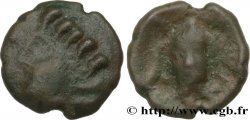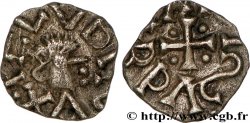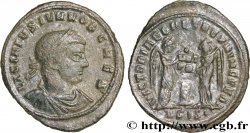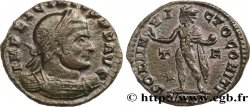v15_0954 - GALLIA BELGICA - REMI (Regione di Reims) Potin à la tête d’indien, classe Ia
MONNAIES 15 (2002)
Prezzo di inizio : 99.00 €
Valutazione : 200.00 €
Prezzo realizzato : 220.00 €
Numero di offerte : 9
Offerta maxima : 255.00 €
Prezzo di inizio : 99.00 €
Valutazione : 200.00 €
Prezzo realizzato : 220.00 €
Numero di offerte : 9
Offerta maxima : 255.00 €
Tipo : Potin à la tête d’indien, classe Ia
Data: c. 180-150 AC.
Nome della officina / città: Reims (51)
Metallo : potin
Diametro : 18,5 mm
Asse di coniazione : 3 h.
Peso : 3,69 g.
Commenti sullo stato di conservazione:
Potin au revers particulièrement bien venu à la coulée et bien conservé. Patine marron foncé
N° nelle opere di riferimento :
Diritto
Titolatura diritto : ANÉPIGRAPHE.
Descrittivo diritto : Tête ceinte d’un bandeau à gauche, la chevelure indiquée par trois mèches, [le cou par quatre petits traits].
Rovescio
Titolatura rovescio : ANÉPIGRAPHE.
Descrittivo rovescio : Sanglier enseigne à gauche, l’oreille et le corps assez naturalistes, la queue en une sorte d’annelet ; double volute sur une ligne d'exergue pointée en son centre.
Commento
Cet exemplaire ne laisse aucun doute sur le symbole de l'exergue au revers qui est particulièrement net. Tous les exemplaires de cette classe I a semblent avoir un diamètre régulier autour de 18-20 mm et une orientation des moules à 3 heures. Le droit est caractéristique avec son visage relativement naturaliste, avec ses trois mèches et son bandeau plein orné d'une ligne ondulée en creux qui ne se retrouve que sur la classe Id1 et sur le "type de Tremblois" (classe Ip) ; ce bandeau semble aller de pair avec un cou orné de quatre petits traits parallèles (particulièrement bien visibles sur l’exemplaire précédent).
This example leaves no doubt about the symbol of the exergue on the reverse, which is particularly clear. All examples of this class Ia seem to have a regular diameter around 18-20 mm and a mold orientation at 3 o'clock. The obverse is characteristic with its relatively naturalistic face, with its three locks of hair and its full headband decorated with a hollow wavy line that is only found on class Id1 and on the \\\"Tremblois type\\\" (class Ip); this headband seems to go hand in hand with a neck decorated with four small parallel lines (particularly visible on the previous example)
This example leaves no doubt about the symbol of the exergue on the reverse, which is particularly clear. All examples of this class Ia seem to have a regular diameter around 18-20 mm and a mold orientation at 3 o'clock. The obverse is characteristic with its relatively naturalistic face, with its three locks of hair and its full headband decorated with a hollow wavy line that is only found on class Id1 and on the \\\"Tremblois type\\\" (class Ip); this headband seems to go hand in hand with a neck decorated with four small parallel lines (particularly visible on the previous example)







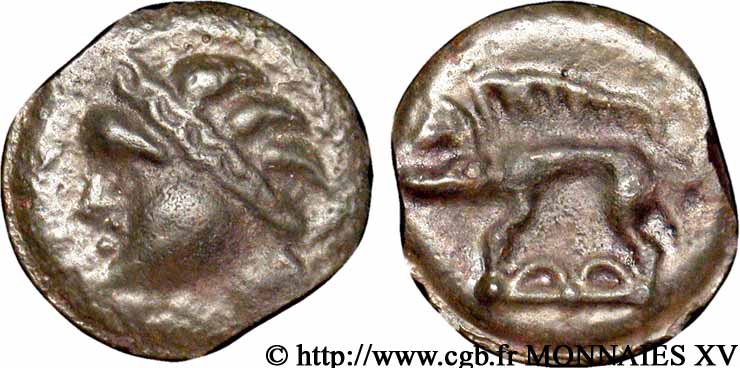
 Segnalare un errore
Segnalare un errore Stampate la pagina
Stampate la pagina Condividi mia selezione
Condividi mia selezione Fai una domanda
Fai una domanda Consegnare / vendere
Consegnare / vendere
 Descrittivo
Descrittivo




